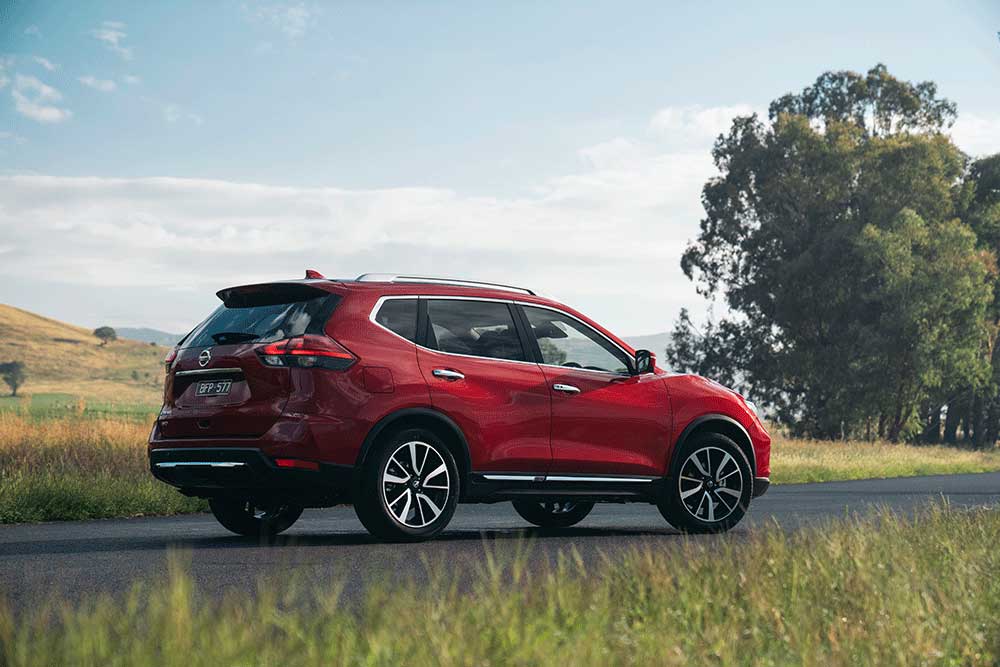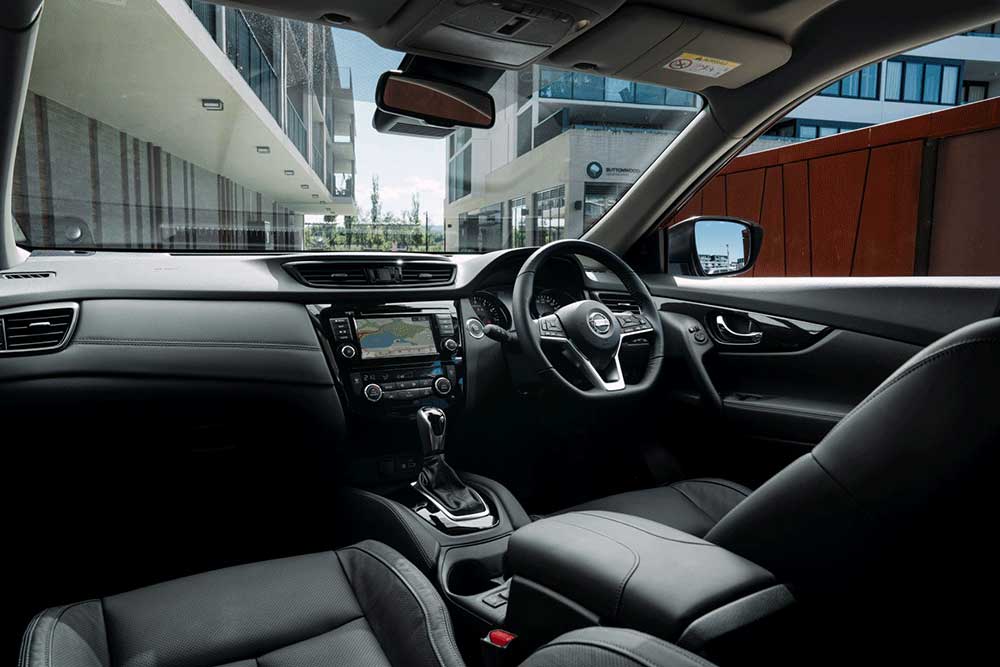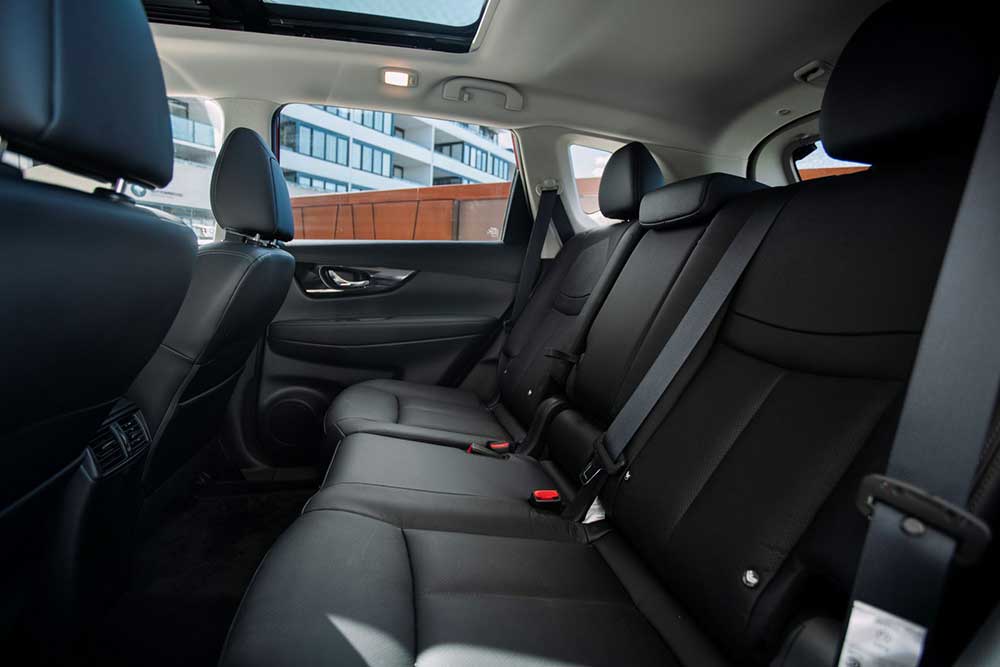Nissan X-Trail Ti 2.5 AWD review

Keeping an ageing model soldiering on until the next big thing arrives isn’t just something fashion houses and film studios have to worry about – it’s a “thing” for the car industry as well.
Selling something bright, shiny, and new is possibly the easiest day’s work a marketer will ever do. But when that something is getting a bit long in the tooth, like Nissan’s third-generation X-Trail SUV, which first arrived in March 2014, the challenge gets that much harder.
The automotive solution usually involves car makers reaching into their bag of tricks to sprinkle some extra features and styling upgrades over the vehicle, possibly even sharpening the pricing pencil while they’re at it.
In the updated MY21 X-Trail, there’s a fair bit of the former but none of the latter, with the refreshed model range attracting price rises of between $475 and $675, grade dependent.
Nissan has also taken the opportunity to rationalise the X-Trail range, with the TL diesel AWD, N-Trek and N Sport variants all retired, leaving buyers to choose from nine models.
What you get for that modest amount of extra coin are added safety features, updated infotainment systems and, on ST-L variants, some spiffy new 18-inch alloys (up from 17s).
The 4x2 range consists of five models in three grades, with the ST 2.0-litre manual starting at $30,665 or $32,665 for the ST auto.

The 4x2 models top out with the ST-L, priced at $38,525 for the five-seater or $40,525 for seven pews. The only other grade with third-row seating is the ST auto, costing $34,265.
If AWD is more your thing, prices start at $34,665 for the ST auto, rising to $45,965 for the Ti auto.
Buyers wanting turbo-diesel instead of petrol power are limited to a single model, the 2.0-litre TS AWD auto, costing $37,465.
Other X-Trails are petrol-powered, with the bulk of the range featuring a 2.5-litre four-cylinder engine married to a CVT auto, while the entry ST manual diverges from the script with its 106kW 2.0-litre four-pot.
The naturally aspirated 2.5-litre’s 126kW/226Nm maximum outputs won’t spook hot hatch owners at the traffic lights, but it’s a willing enough unit that’s easily capable of staying the course with urban traffic or cruising on the open road with enough in reserve for competent passing manoeuvres.
The engine’s relaxed qualities carry over to the Ti’s road manners, which cope well with most surfaces, even on the larger 19-inch wheel and tyre package.
It’s not as plush as rival Subaru’s Outback, but it’ll satisfy most owners.

The comfortable ride is backed up by pleasantly weighted steering and secure, predictable road holding.
But, while it’s all perfectly competent, the X-Trail lacks the dynamic edge of more polished rivals, such as Mazda’s CX-5.
The X-Trail makes a more positive impression via its spacious cabin, which includes a sliding second row of seats to help optimise passenger and load space as required.
Seat heating is standard up front and for passengers in the outer rear positions, while an almost flat floor allows for better foot space for the centre rear passenger.
A usefully proportioned 565 litres of cargo space is accessed via the Ti’s motion-activated power tailgate, expanding to 945 litres when the split rear seat is folded.
A simple but clever design on five-seat models is a two-piece cargo-area floorboard that can provide under-floor stowage or be installed vertically to act as a load partition.
Nissan calls this feature “Divide-N-Hide”, and it’s perfectly proportioned for storing groceries or even a few cartons of drink.

As part of the MY21 revisions, DAB+ radio, voice recognition and Nissan’s Next-Generation infotainment with Apple CarPlay and Android Auto become standard across all grades.
At the system’s heart is a 7.0-inch touchscreen with updated graphics.
It’s all easy enough to use, although the screen size is smaller than some of its newer competitors. An eight-speaker Bose audio also comes standard on Ti models.
The suite of driver assistance and safety technology on both the mid-spec ST-L and more comprehensively equipped Ti has been expanded to include Intelligent Driver Alert, which monitors driver inputs and recommends a break when it detects signs of fatigue.
However, the Ti is the only model with the full driver assistance suite, including lane departure warning, lane departure prevention, intelligent cruise control and intelligent emergency braking with pedestrian detection.
While the new generation X-Trail is just around the corner, the current car must be doing something right as it’s the third-best seller in the under $60k medium SUV segment and one of Nissan’s most popular models.
These latest revisions, small though they are, won’t do the X-Trail’s buyer appeal any harm and should keep sales ticking over until the inevitable runout deals emerge before the launch of the new model sometime in 2022.
Key stats
- MLP: $45,965
- Engine: 2.5-litre, four-cylinder petrol
- ANCAP crash rating: 5 stars (2017)
- Fuel consumption (combined cycle, litres/100km): 8.3 (192 g/km CO₂)
- For: MY21 equipment and safety upgrades, practical touches, spacious, easy and relaxing to drive, five-year/unlimited-kilometre warranty and capped price servicing.
- Against: New model not far off, foot-operated park brake, space-saver spare, no front parking sensors, limited range of seven-seat models.
Related topics
Things to note
The information in this article has been prepared for general information purposes only and is not intended as legal advice or specific advice to any particular person. Any advice contained in the document is general advice, not intended as legal advice or professional advice and does not take into account any person’s particular circumstances. Before acting on anything based on this advice you should consider its appropriateness to you, having regard to your objectives and needs.
Insurance Products (excluding Travel Insurance) are issued by RACQ Insurance Limited ABN 50 009 704 152 (RACQI) and arranged by its agent, RACQ Distribution Services Pty Ltd (RDS) ABN 35 116 361 650, AFSL 567130 and RDS' authorised representatives (including RACQ Operations Pty Ltd ABN 80 009 663 414, AR No. 234978 (RACQO). Conditions, limits and exclusions apply. RDS and RACQO are in the RACQ group of companies. One of the companies in the RACQ group of companies has a minority shareholding in RACQI.
RDS and RACQO have not taken your personal objectives, circumstances or needs into account when preparing advice regarding insurance products and you will need to consider whether the advice is appropriate for you. Read the Product Disclosure Statement (PDS) and any applicable Supplementary PDS before making a purchase decision on this product. You can also access our Target Market Determinations on this website. RDS receives a commission from RACQI for the policies it arranges. RACQO receives fees paid for services it provides to RDS. Further details about remuneration are available on request prior to purchasing.
Banking and loan products issued by Members Banking Group Limited ABN 83 087 651 054 AFSL/Australian credit licence 241195 trading as RACQ Bank. Terms, conditions, fees, charges and lending policies apply. This is general advice only and may not be right for you. This information does not take your personal objectives, circumstances or needs into account. Read the disclosure documents for your selected product or service, including the Financial Services Guide and the Terms and Conditions, and consider if appropriate for you before deciding.
Except for RACQ Bank, any RACQ entity referred to on this page is not an authorised deposit-taking institution for the purposes of the Banking Act 1959 (Cth). That entity’s obligations do not represent deposits or other liabilities of RACQ Bank. RACQ Bank does not guarantee or otherwise provide assurance in respect of the obligations of that entity, unless noted otherwise.
RACQ Bank subscribes to the Customer Owned Banking Code of Practice which establishes higher standards than the law requires. The Code reflects modern consumer expectations and developments in approaches to issues such as consumer vulnerability, guarantors, and supporting customers through financial hardship. Please read our Customer Owned Banking Code of Practice page for more information.
RACQ Operations Pty Ltd (ABN 80 009 663 414 AR 000234978) and Members Travel Group Pty Ltd (ABN 45 144 538 803 AR 000432492) are acting as an Authorised Representative of the issuer of the insurance, Tokio Marine & Nichido Fire Insurance Co., Ltd. (ABN 80 000 438 291 AFSL 246 548). Any advice set out above is general in nature only, and does not take into account your objectives, financial situation or needs. Before purchasing any travel products, please consider the RACQ Travel Insurance Product Disclosure Statement (PDS) and the Target Market Determinations (TMDs) that apply to these products. Whilst the PDS outlines the Terms and Conditions of these products, the TMDs outline the intended class of customers that comprise the target market for these travel products. This will allow you to consider which products best suit your objectives, financial situation and needs and consider the products appropriateness to your personal circumstances. TMDs also outline matters involving the distribution and the review of these products. The PDS, Supplementary PDS and TMDs for each travel product can be found here.
